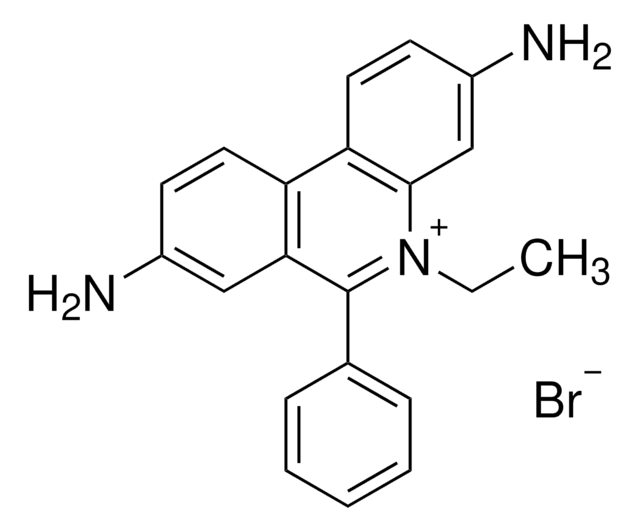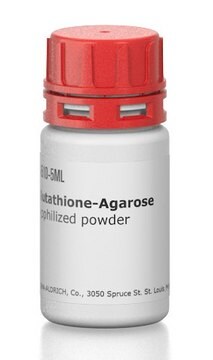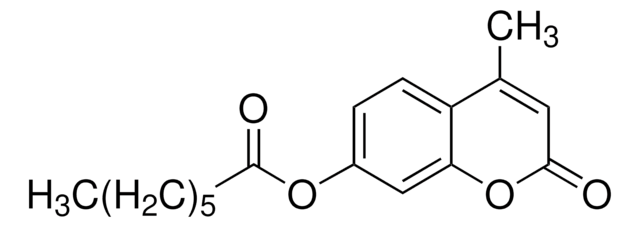S6814
SynaptoGreen™ C4
≥95% purity (HPLC), solid
Sinónimos:
FM1-43, N-(3-triethylammoniumpropyl) -4-(4-(dibutylamino)styryl) pyridinium dibromide, Pyridinium, 4-[2-[4-(dibutylamino)phenyl]ethenyl]- 1-[3-(triethylammonio)propyl]- , dibromide
About This Item
Productos recomendados
product name
SynaptoGreen™ C4, ≥95% (HPLC), solid
Quality Level
assay
≥95% (HPLC)
form
solid
color
dark red
solubility
DMSO: soluble
H2O: soluble
εmax
≥50000 at 507-513 nm in methanol
application(s)
diagnostic assay manufacturing
hematology
histology
storage temp.
−20°C
SMILES string
[Br-].[Br-].CCCCN(CCCC)c1ccc(\C=C\c2cc[n+](CCC[N+](CC)(CC)CC)cc2)cc1
InChI
1S/C30H49N3.2BrH/c1-6-11-23-32(24-12-7-2)30-18-16-28(17-19-30)14-15-29-20-25-31(26-21-29)22-13-27-33(8-3,9-4)10-5;;/h14-21,25-26H,6-13,22-24,27H2,1-5H3;2*1H/q+2;;/p-2
InChI key
VZUVCAGXYLMFEC-UHFFFAOYSA-L
Categorías relacionadas
General description
Application
Biochem/physiol Actions
Other Notes
Legal Information
Storage Class
11 - Combustible Solids
wgk_germany
WGK 3
flash_point_f
Not applicable
flash_point_c
Not applicable
ppe
Eyeshields, Gloves, type N95 (US)
Elija entre una de las versiones más recientes:
¿Ya tiene este producto?
Encuentre la documentación para los productos que ha comprado recientemente en la Biblioteca de documentos.
Nuestro equipo de científicos tiene experiencia en todas las áreas de investigación: Ciencias de la vida, Ciencia de los materiales, Síntesis química, Cromatografía, Analítica y muchas otras.
Póngase en contacto con el Servicio técnico
![2-[4-(Dimethylamino)styryl]-1-ethylpyridinium iodide ≥99% (HPLC), solid](/deepweb/assets/sigmaaldrich/product/structures/352/365/080860c7-fc55-4914-8b9b-0c52847035cb/640/080860c7-fc55-4914-8b9b-0c52847035cb.png)







